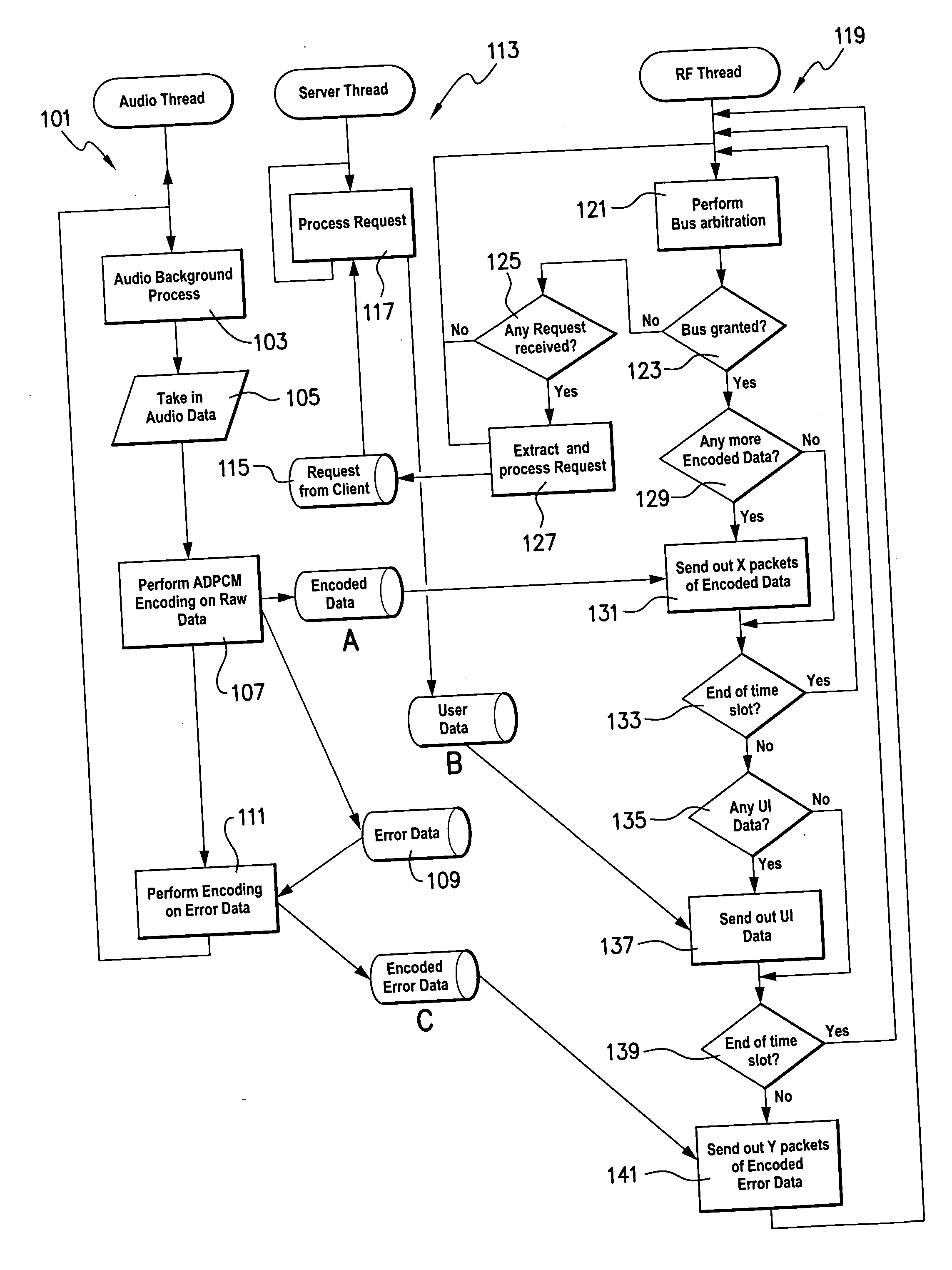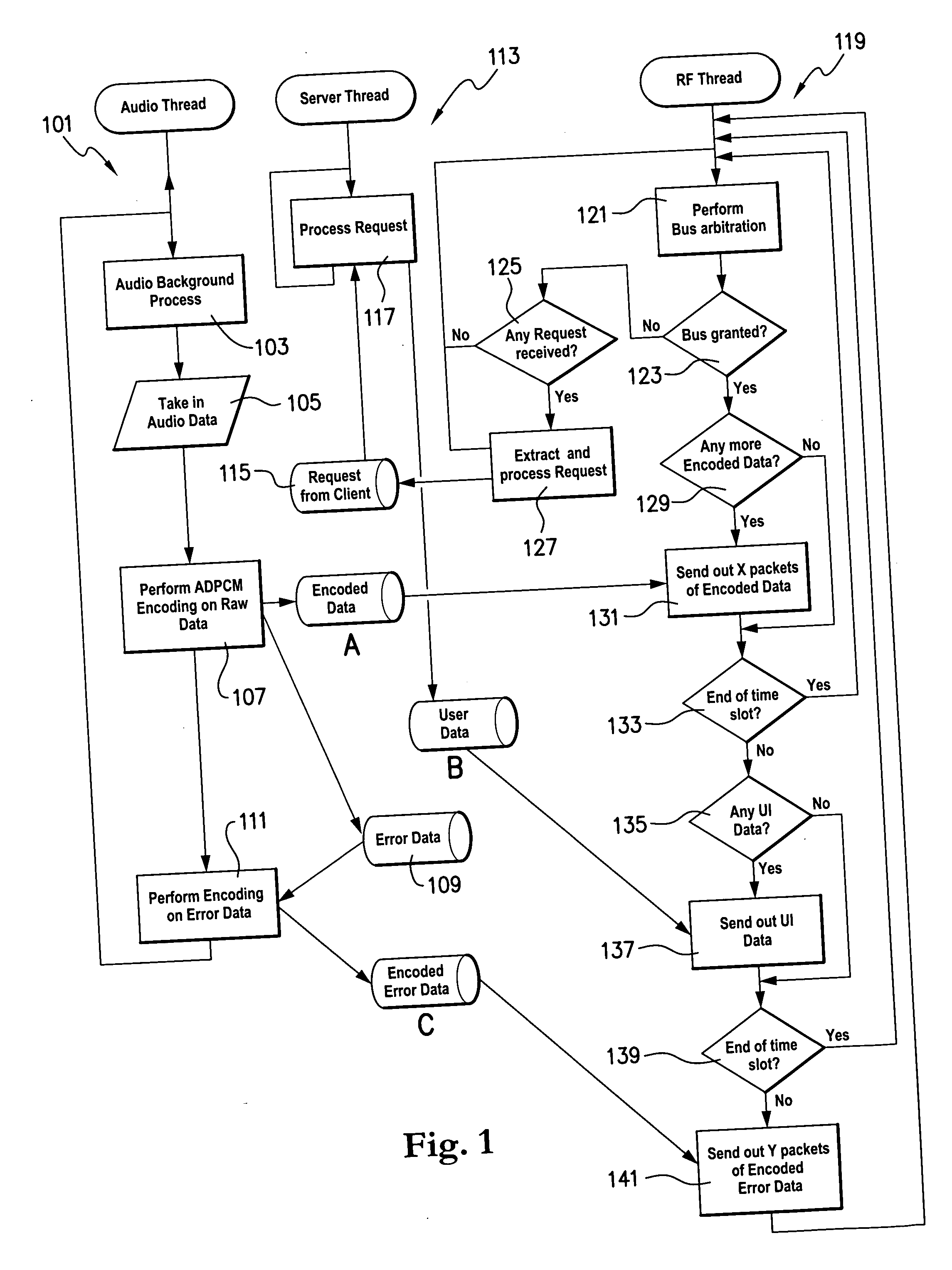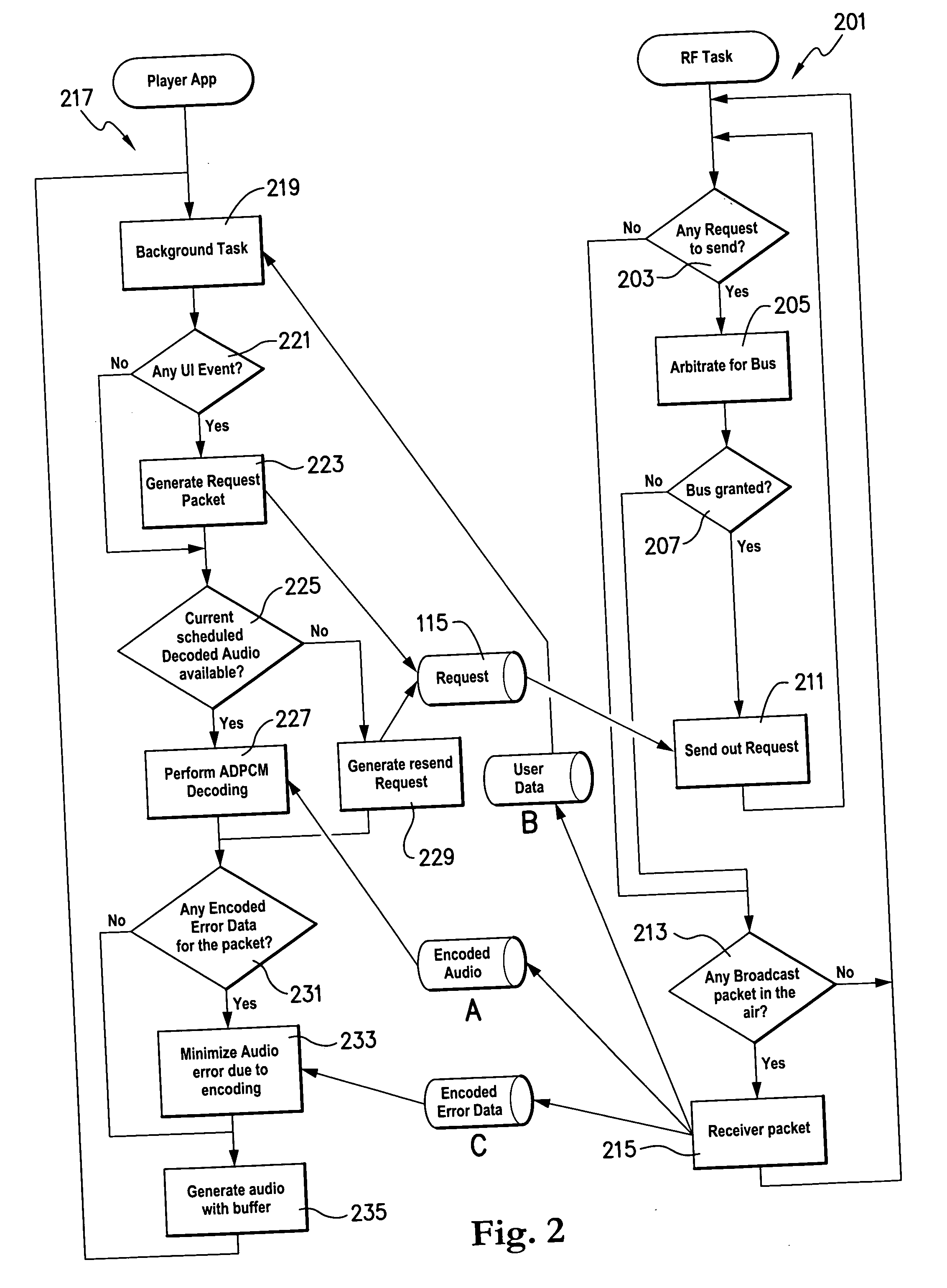Real time optimization over a shared communication channel
a shared communication channel and real-time optimization technology, applied in the field of encoded signal transmission, can solve problems such as constant change, achieve the effect of reducing color information, improving audio video quality, and reducing video quality
- Summary
- Abstract
- Description
- Claims
- Application Information
AI Technical Summary
Benefits of technology
Problems solved by technology
Method used
Image
Examples
Embodiment Construction
[0112] In the described embodiment, we consider a host station in the form of a server station and a plurality of client stations in the form of wireless client terminals. The server station is arranged to send encoded audio data, user data and encoded error data to the client terminals by RF and to receive requests from client terminals by RF. The client terminals are arranged to receive encoded audio data, user data and encoded error data from the server station by RF and to send client requests by RF to the server station.
[0113]FIG. 1 is a flow chart showing operation at the server station. FIG. 2 is a flow chart showing operation at a given client terminal.
[0114] The flow chart of FIG. 1 is divided into three threads, showing the different aspects of operation. The first thread 101 is the audio thread. This part of the flow chart shows the processes performed by the server on the audio data. The second thread 113 is the server thread. This part of the flow chart shows the serv...
PUM
 Login to View More
Login to View More Abstract
Description
Claims
Application Information
 Login to View More
Login to View More - R&D
- Intellectual Property
- Life Sciences
- Materials
- Tech Scout
- Unparalleled Data Quality
- Higher Quality Content
- 60% Fewer Hallucinations
Browse by: Latest US Patents, China's latest patents, Technical Efficacy Thesaurus, Application Domain, Technology Topic, Popular Technical Reports.
© 2025 PatSnap. All rights reserved.Legal|Privacy policy|Modern Slavery Act Transparency Statement|Sitemap|About US| Contact US: help@patsnap.com



